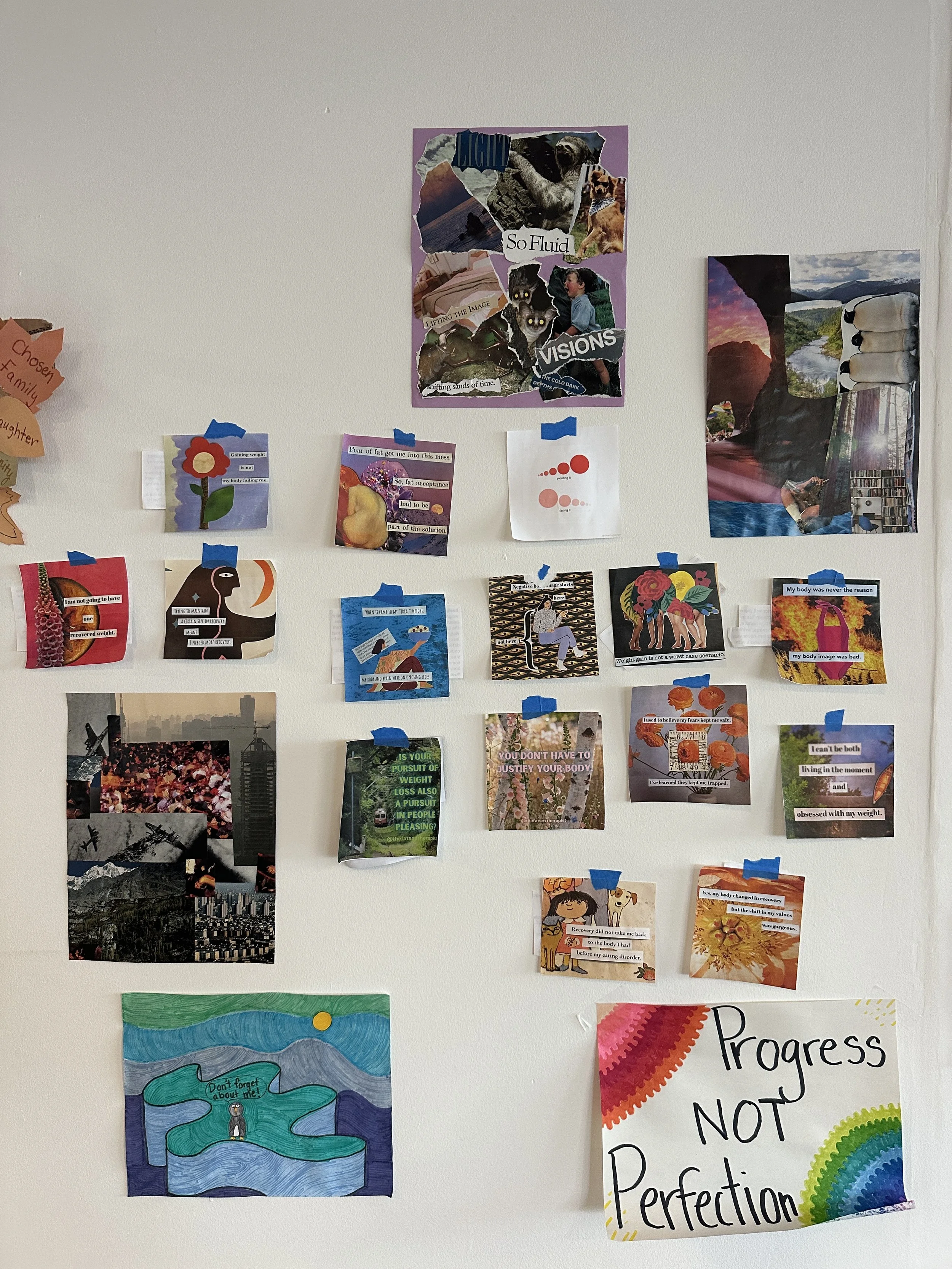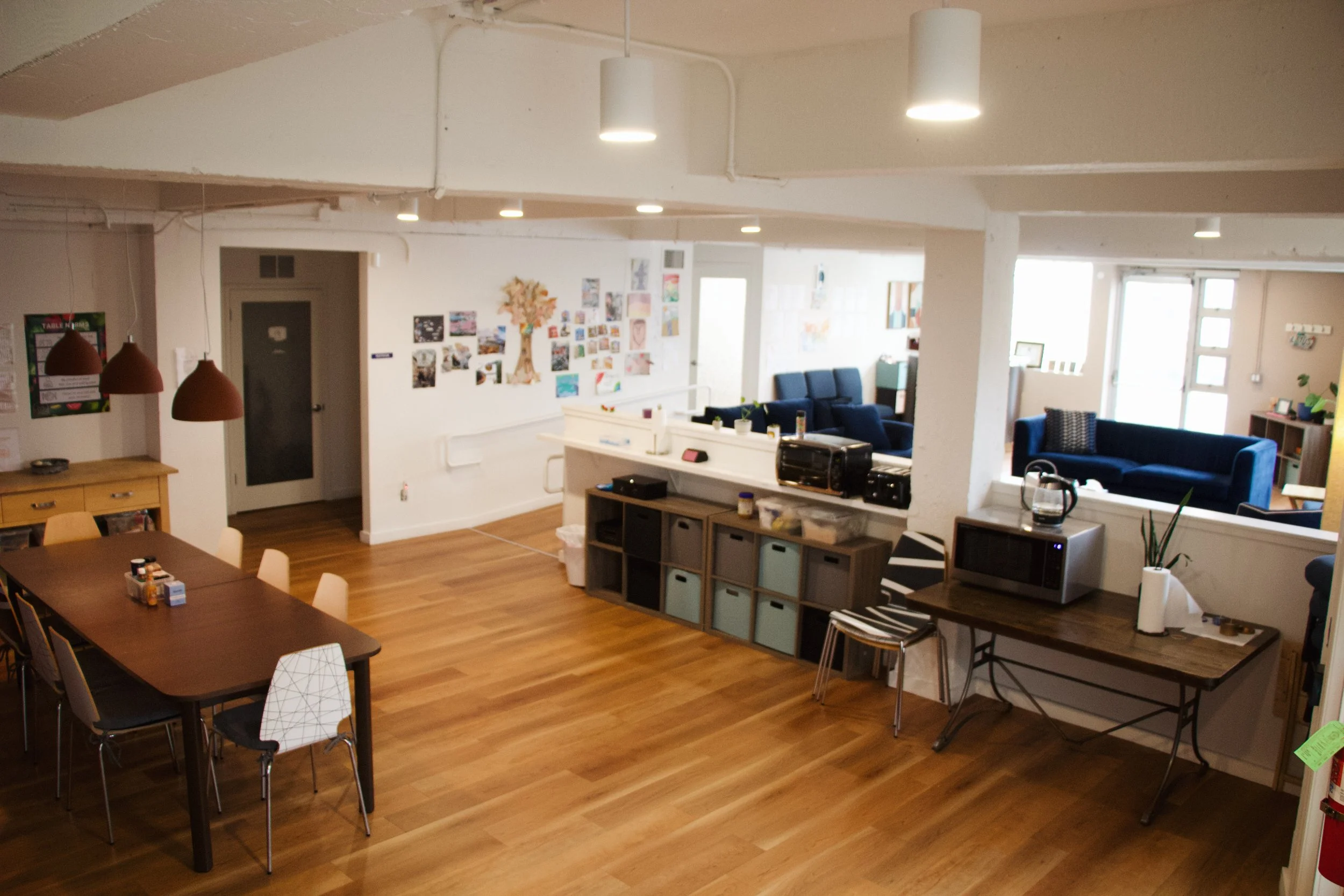
The Benefits of Mixed-Age Therapy Groups
September, 2025
“My advice would be to lean into the process and be as vulnerable as you can.”
-Previous Lotus Client
At The Lotus Collaborative, one of the most common questions we hear is: “Why do you treat adolescents and adults together?” It’s an important question, and the answer lies at the heart of our clinical philosophy.
We believe true community thrives on diversity. Healing deepens when people of different ages, identities, and life experiences come together to learn from and support one another.
From Our Table
Recently, during morning snack, seven clients gathered around the table with one of our dietitians, Anna. Ages ranged from 19 to 46.
Our newest client, age 46, was sharing a hilarious story about her son bringing home a new girlfriend the night before. She had thoughts about every part of the relationship and the girl.
The 19-year-old across the table leaned in:
“How old is your son?”
“19,” she replied.
“I’m 19! Wait, tell me about the girl!”
The two launched into a lively back-and-forth that carried on for days. Later, when the topic came up again, Anna asked for an update. The client explained that her conversations with the 19-year-old had opened her eyes to Gen Z humor, fashion, and culture. She said that by allowing herself to be vulnerable enough to learn and trust, she was able to reduce strain on her relationship with her son (her biggest supporter) by inviting the girlfriend over and cooking the three of them a meal to get to know each other.
Anna said it best: “What the clients say to one another has an impact that shouldn’t be downplayed. I could say the exact same thing, but sometimes the insight only clicks when they hear it from a peer.”
Trusting the Process
When you begin treatment, whether you’re 14 or 74, it’s natural to want the comfort of being surrounded by people who feel familiar. But recovery isn’t only about comfort. It’s about growth.
Healing asks us to step outside the familiar and practice new ways of relating, listening, and connecting. In mixed-age therapy groups, that practice happens in real time.
Both ends of the spectrum stretch and grow.
The result is a dynamic exchange of wisdom, vulnerability, and resilience.
Anna describes it like this:
Adolescents tend to bring honesty and raw truth. They normalize struggles, reduce shame, and expand their peers’ vision of recovery.
Millennials often carry existential dread and deep family wounds, but they are also some of the hardest workers. They’re resilient and generous with their insights.
Adults may be slower to open, but their lived experience is powerful. They often tolerate no pretense and will do anything for others, often before themselves.
Each perspective is different, but when they come together, clients see themselves reflected, challenged, and supported in new ways.
Individual Fit Matters
At Lotus, we always prioritize what’s best for each individual client and for the group as a whole. We are not tied to a single treatment model; our programming is flexible and tailored to the needs of the current community. A “Recovery Skills” group one day may look completely different the next, shaped by the needs of the group that moment, that day, or that year.
While mixed-age groups can be incredibly powerful, they aren’t the right fit for every client at every stage. When needed, we divide groups by age or other characteristics, such as level of care, movers vs sitters, who needs body image focus vs food eating focus support, or even something as simple as the first five people to arrive. And if it ever feels like a mismatch, we adjust, or refer to a trusted program.
What we’ve seen time and again is that when clients lean into the process, opening up, allowing themselves to be seen, and fully engaging with the work, things begin to shift.
Trusting the process is one of the most common lessons our graduating clients pass along to incoming clients. It’s not always easy at first, but it’s where real transformation occurs.
The Heart of Our Work
When clients reflect on their time at Lotus, they rarely mention the ages of the people in the room. As Anna notes: “If they do mention it, it’s usually to name how pleasantly surprised they were to connect with someone of such a different age.”
What they remember are the moments of connection, the tears, the laughter, the breakthroughs, and the first time they spoke their truth and realized they weren’t alone.
We understand that mixed-age groups can feel surprising at first. But in practice, they often become one of the most powerful parts of treatment. With skilled facilitation, the group becomes a microcosm of the real world, where recovery is practiced in ways that carry over into daily life.
By the time clients graduate, they’ve had opportunities to rehearse returning home, reconnecting with their community, and navigating everyday experiences like going to the grocery store, shopping for clothes, eating at restaurants, and interacting with people across different ages and walks of life.
At Lotus, we trust the process because we’ve seen it work. Healing happens when people come together, across generations, to share wisdom and remind each other that recovery is possible.
Taking Your First Step
Our client turned the unfamiliar into healing by being curious enough to lean in and brave enough to open up. Embracing diversity in recovery creates a community where differences become strengths. Healing has many paths, each one adding depth, perspective, and richness to the space we share.
If you or someone you support is ready for compassionate care, our admissions team is here to talk.
📞 Call 855-852-4968
📧 Email info@thelotuscollaborative.com
📋 Fill Out a Consultation Request Form
Written & Created by Lea Horsley





